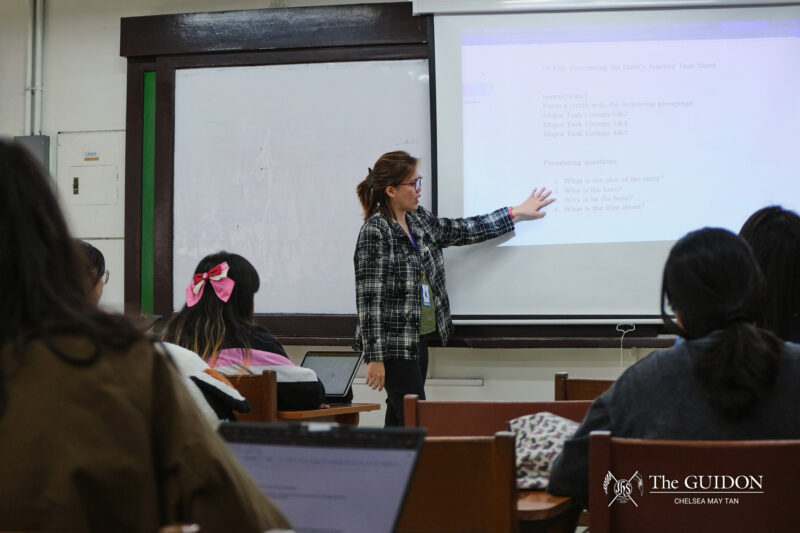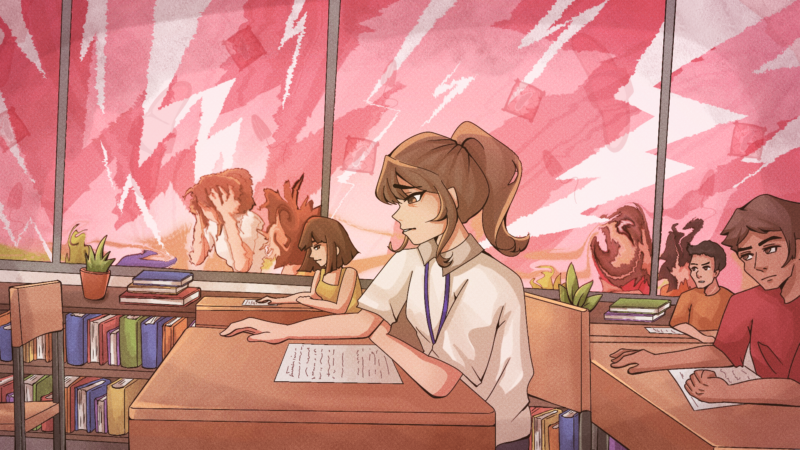Barangay Loyola Heights houses many lucrative establishments—restaurants, businesses, private schools, student dormitories, and exclusive subdivisions. But within the bustling community lies four informal settlement areas.
These are Samahang Magkakapitbahay ng Park-7 (Park-7), Marytown Neighborhood Association (Marytown/Park-10), Samahang Mamamayan ng Ronas Garden (Ronas Garden), and Aktibong Mamamayan ng Daan Tubo (Daan Tubo).
Having resided in Park-7 for decades now, 60-year-old Lina Tapil says her community lacks support from the barangay and government. “May natatanggap ba [tayong serbisyo]? Wala naman (Do we receive any [service]? I don’t think so.),” she says.
Need for free medicine
Medicine and public health services, for example, can be improved by the barangay, says Tapil. “Dapat mapabuti [ang serbisyo] lalo ngayong panahon ng tag-ulan ([The service] should be improved, especially during this rainy season).” Tapil says that during the rainy season, residents are more vulnerable to diseases.
Canals overflow in the area, especially during the rainy weather. She says that the flooding brings in the danger of diseases.
To resolve this, a health team composed of a physician, a nurse, a dentist, dental aides, a nutritionist, and a midwife is assigned by the Quezon City Health Department (QCHD) to supervise the health condition of the settlers.
The team gives free medical consultations in the Barangay Health Center every Tuesday from 8 am to 3 pm. But patients still have to pay for medicines.
Twenty-eight year-old Park-7 resident Glenda Manaligod appreciates the check-ups, but she believes that the medicine should be given free. Manaligod thinks this will help other residents in allocating money for other necessities such as food.
The doctors often give free medicine, says 40 year-old Belma Cagas, another resident. She notes, however, that the free medicines are usually stocks from the Botika ng Barangay, and are nearing their expiration dates.
Botika is a drugstore near the barangay hall that sells drugs “at prices within reach of people from the lowest income group.”
Even though cheap the medicine may be in the pharmacy, this still slashes the residents’ food budget. “Imbes isang kilong bigas ang mabibili, kalahati na lang dahil sa gamot (Instead of purchasing a kilogram of rice, we can only buy half kilo because we have to allocate money for medicine),” says Cagas.
Keeping peace and order
Peace and order have also been one of the biggest problems in Loyola Heights, even before its current chairman, Caesar Marquez, had been elected.
Thus, Marquez increased the number of tanods during his term. Philippine National Police 2008 data reveals that the actual number of petty squabbles, hold-ups and theft in Loyola Heights decreased to 165 from 303 in 2007.
Cagas says tanods patrol around the barangay to make sure than no minors are outside of their houses at around 10 or 11pm, thus decreasing criminality.
Tapil adds that the reinforcement of the duties of Barangay Justice System is another project that Loyola Heights can be proud of. The eleven-man committee aims to conciliate two panels and settle disputes immediately in the neighborhood.
“Isang tawag mo lang sa kanila at maayos ang mga pagtatalo (Call them once, and minor quarrels will be settled right away),” Tapil says.
On education
For Marquez, education, along with security, is also a major concern of the barangay. Though Loyola Heights is known as the “educational hub of Quezon City,” Marquez says that illegal settlers cannot afford the price of education.
“[Because] these schools are very far from Loyola Heights, [families] have to spend so much just for transportation. Because of these, [students] eventually stop studying,” he says.
Ateneo Student Catholic Action (Atsca) Park-7 Area Head Mike Abay agrees. “What happens is that they end up walking the third leg of the journey to save money,” Abay says.
The barangay has implemented various education programs such as the Alternative Learning System and the E’Skwela program. Both programs aim to enhance residents’ skills in information and technology.
“We created this program so that these children, instead of loitering in the streets, would instead be studying,” says Marquez.
Tapil says, however, that she prefers to send her kids to projects promoting “basic literacy,” like the Interactive Children’s Literacy Program (I-CLiC), rather than technology-based projects such as E’Skwela. Launched in 2006, I-CLiC is a one-on-one tutorial program offered to selected residents.
Crossing the fence
Cagas thinks that more students should be allowed to enlist in the barangay’s educational programs.
To help those who can’t get in the barangay’s educational programs, non-government organizations and Ateneo student orgs have made these settlement areas part of their advocacies.
“Kahit na hindi natuturo sa kanila lahat [ng Atsca], nakahahabol ang anak ko sa itinuturo sa school (Even if [Atsca] does not teach the kids everything, at least my kids can catch up with their discussions in school,” Cagas says.
Atsca is an org that holds prayer sessions, weekly tutorials, and area visits in several apostolate areas in the metro. Abay believes that through his org’s site visitations, being men and women for others is made concrete.
“We go to the areas to share the things that we learn in school. And beyond that, we relate with them,” he says.
Musmos Katipunan Area Head Darlene Madlangbayan agrees with Abay. Musmos is a sector-based Ateneo student organization that includes Katipunan (Daan Tubo and Marytown) as their apostolate area for ten years now.
“We want to hone the skills of the kids. When you ask the kids what they want to be when they grow up, they’d say to be a [fast food] crew. Our goal is to make them aspire for more, like [aim to] be a doctor.”
Informal settlers
A native of Bicol, Tapil says that she spent almost half of her life in Park-7. Her now-married eldest of the three sons even studied elementary in the area. Manaligod, meanwhile, who hails from Cagayan, has been in the area since her childhood.
Even though the settlers have been in Loyola Heights for a very long time, their stay is still illegal, says Marquez. “When they settled in the area, they did so even without a permit.”
Following due process, the settlers can be asked to leave. Marquez clears, however, that only the landowners can file for such petitions. While Park-7 and Marytown used to be town parks and are government properties, Daan Tubo and Ronas Garden are owned by Manila Water Services and Meralco, respectively.
Marquez says that there have been no petitions claiming the lands because the lands are “generally not being used by their owners.”
Getting by
The national government has introduced programs focused on alleviating poverty. The government grants selected families National Food Authority (NFA) rice supply. In addition, certain families receive free medical support through Phil Health. Moreover, the government extends financial assistance ranging from P100 to P600 or more per month to impoverished families.
But the beneficiaries of such programs are those who “have almost nothing to eat,” as determined by social workers. Marquez says that Loyola Heights residents barely qualify for the program because they are hired as household helpers and drivers of nearby subdivisions.
Though not granted accessibility to those programs, Marquez says that the barangay is doing everything to help the informal settlers, which comprise 60% of the 18,000 population . “Actually, you can even say that the programs [of the barangay] are more for [the informal settlers],” Marquez says.
For example, the settlers would most likely visit the barangay clinic than those who live in subdivisions who would rather go to private hospitals, he says.
While Loyola Heights is not wanting of services for its members, much can still be done for the informal settlers who, despite their poverty, are hopeful of better things to come.
Cagas says, “Kahit nahihirapang kumain sa araw-araw at mapagkasya lahat, kami ay buong pamilya (Even we are burdened in looking for food sources and in making the ends meet, our family stands as one still).”
With reports from Irwin Amago






